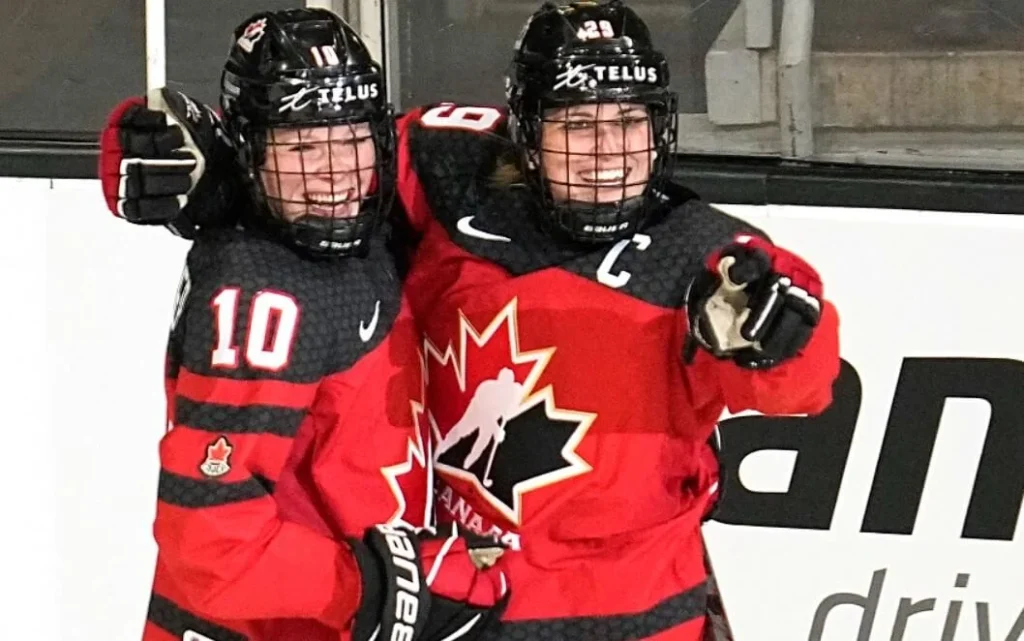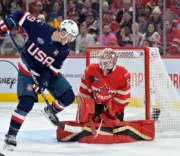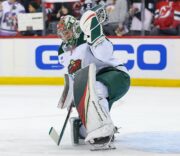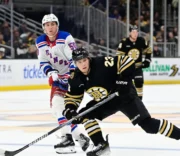
The hockey world is buzzing with the news of the Professional Women’s Hockey League’s (PWHL) upcoming inaugural season. Unlike other women’s sports leagues that rely on male leagues for financial backing, PWHL is carving its own path, albeit with valuable non-monetary support from the NHL. Let’s take a closer look at what this new league has to offer and how it aims to revolutionize women’s professional hockey.
Origin of the PWHL
The new league emerged from a unique collaboration led by luminaries like Los Angeles Dodgers co-owner Mark Walter and tennis legend Billie Jean King. The initiative aims to unify women’s professional hockey, which had previously been fragmented among various organizations and associations. This consolidation brings a significant majority of U.S. and Canadian national team players under one umbrella, forming a talent pool of around 300 top athletes.
Supportive Ties with the NHL
Unlike the WNBA, which enjoys financial backing from the NBA, the PWHL operates independently of monetary assistance from the NHL. However, the NHL’s leadership has been very forthcoming with advice and guidance. According to Stan Kasten, a board member of the PWHL, from the very first conversations with NHL Commissioner Gary Bettman, the NHL’s top brass has been ready to assist, advise, and make suggestions, even as they recognize that the PWHL must make its own decisions and manage its financial resources.
The Players: Who Makes the Cut?
An array of talent, including American star Hilary Knight and Canadian legend Marie-Philip Poulin, will grace the league.
Key Players:
- Hilary Knight (USA)
- Marie-Philip Poulin (Canada)
- And several other global stars
Financials:
- Salary range: $35,000 to $80,000
- 23-player active rosters for each team
Locations and Logistics
Six teams will be strategically located across North America:
- Boston
- Minneapolis-St. Paul
- New York City Area
- Toronto
- Montreal
- Ottawa
While venues are still being finalized, the PWHL plans to use both small and large arenas as it navigates its inaugural season. There’s also a possibility of neutral-site games to grow the game beyond these initial markets.
How Players Will Be Recruited
The league has a well-defined process for building team rosters:
- Free Agent Signing: Initial phase for signing up to three free agents per team.
- First Draft: A 15-round draft event in Toronto to fill the roster up to 18 players.
- Training Camp: Each team must bring in at least 28 players, including those under contract and others on a tryout basis.
Financial Backing and Sustainability
Private funding for the league comes from Mark Walter and his wife Kimbra, who view the financial outlay not as an expense but as an investment in building something of lasting value. A comprehensive 10-year business plan has been developed to guide the league through its initial phases, which are expected to operate at a loss.
What Lies Ahead
The league’s inaugural season is targeted to kick off as early as January 1st. The PWHL is exploring opportunities to collaborate with the NHL for specific events, such as the NHL’s Winter Classic on New Year’s Day or the NHL All-Star Weekend. Over the years, the league aims to expand its footprint to other cities and increase the number of games each team plays.
By stepping onto the ice with a strategic vision, top-level talent, and support from the NHL, the PWHL isn’t just making history; it’s reshaping the future of women’s sports. While the league is in its early stages, its goals are ambitious, making it a fascinating entity to watch in the evolving landscape of professional sports.
The League’s Goals
Beyond its operational structure, the PWHL has a wider purpose. It seeks to resolve the longstanding rift in women’s hockey by consolidating talent and providing a unified platform for the world’s best players. This consolidation ensures that the PWHL will feature the top talent in women’s hockey, enhancing the league’s appeal to fans and sponsors.
Promoting the Sport
The league also aims to promote the growth of women’s hockey beyond its current borders. While the initial six cities were chosen strategically, there is interest in expanding to other markets. Cities like Washington, D.C., Pittsburgh, and Buffalo, New York, have been noted as potential future locations.
Equal Opportunities
A vital component of the league’s vision is to ensure equal opportunities for all players. Jayna Hefford, the PWHL senior vice president of hockey operations, emphasized that all players, regardless of their previous affiliations, are welcome and will be treated the same. This inclusivity extends to players from the Professional Hockey Players’ Association (PWHPA), the Professional Hockey Federation (PHF), USA Hockey, Hockey Canada, the NCAA, and other organizations.
Player Welfare
The league is also committed to the welfare of its players. A collective bargaining agreement (CBA) has been established, which includes provisions for players with extenuating circumstances that limit where they can play. This level of care and attention to the players’ needs is a crucial aspect of the league’s vision and operations.

Challenges Ahead
While the league has a solid plan in place and substantial backing, it is not without its challenges.
Logistical Challenges
The initial logistical challenges include finalizing team names, logos, and schedules. There is also the significant task of determining where players will end up, and general managers need to be chosen for the Original Six teams of the league.
Financial Challenges
Financially, the league faces the challenge of managing start-up costs, which are expected to put the league in the red during its initial seasons. The Walter family’s commitment to funding the league provides a solid foundation, but achieving financial sustainability will be a critical goal in the coming years.
Building a Fan Base
Building a dedicated fan base will also be a key challenge. Women’s sports leagues often struggle to attract the same level of attention and support as their male counterparts. The PWHL will need to work diligently to market itself and its players, build strong relationships with its fans, and develop partnerships that will help it grow its audience over time.
Competition with Other Leagues
Another challenge is the competition from other women’s hockey leagues. Although the PWHL has consolidated much of the top talent, there are still other leagues in operation. It will be important for the PWHL to establish itself as the premier destination for women’s hockey players and fans.
































